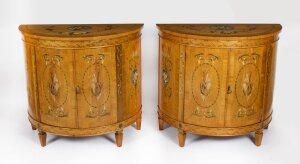Antique Pair Adam Revival Satin wood Painted Cabinets Commodes C1920


Ref:
A3991
Price:
£
0.00














